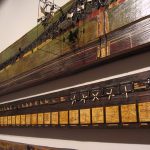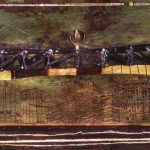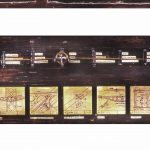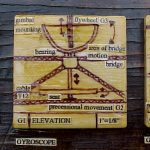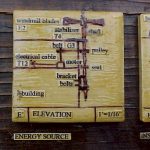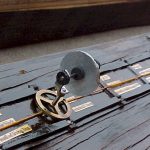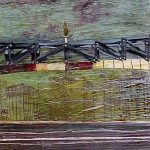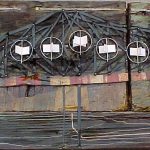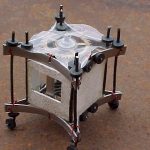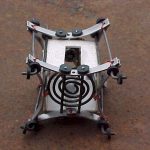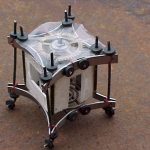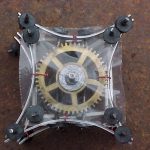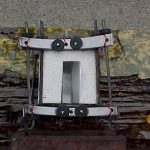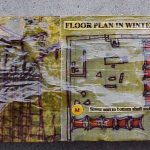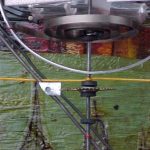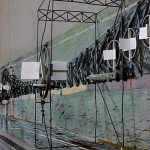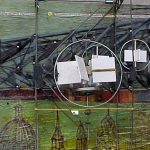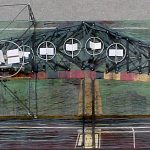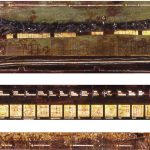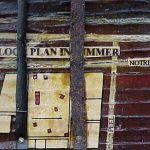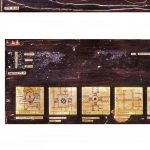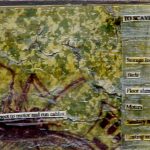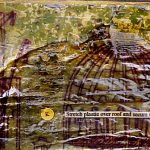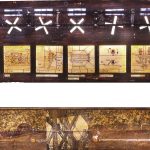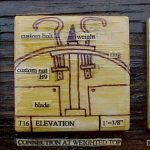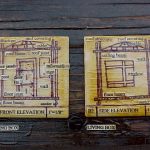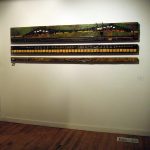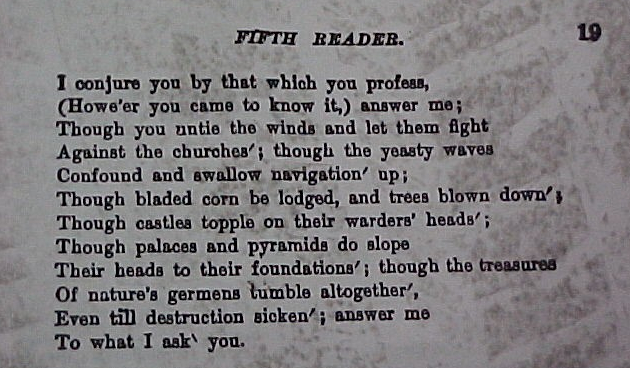
The Storm - Le Pont Jacques-Cartier; Montréal, QC 96” x 27” / Mixed Media on Board / 2000
Inspired by a poem found by a river, far from Montreal, in an entirely random event that has no bearing on this story.
1. As the wind blows down the St. Lawrence river, the turbines begin to spin.
2. At the base of each turbine is a power spring, which becomes more and more tightly wound as time passes, until its elastic potential energy is at a maximum, and the spring may be compressed no further.
3. The arrested rotation of the spring likewise restricts the turbine. As the blades slow and eventually come to a stop, they present a large surface area to the prevailing winds, catching them like sails.
4. The wind continues to blow, and the static turbine blades increase the aerodynamic drag of the entire structure, which causes the bridge to move in ways unanticipated by its designers.
5. A gyroscope, mounted at the center point of the bridge, registers this dangerous change. The gyroscope mechanism releases the turbine springs when the structural deformation approaches a critical level.
6. The springs expend their energy by spinning the turbines rapidly in the opposite direction, generating a wind-storm of unnatural proportions.
7. A low-pressure zone develops along the lateral axis of the river, causing the buildings along its banks to collapse, reducing most of the city of Montréal to rubble.
8. The turbines, and associated systems, contain all the parts necessary to transform them into temporary shelters for the workers that are rebuilding the city. Personal items such as beds and storage lockers may be easily salvaged or otherwise procured.
9. The old Molson Brewery, on the corner of Peel and Ottawa, survives the storm, and is designated headquarters for the disaster relief effort. The shelters are assembled within the large interior spaces of the abandoned factory, and can be arranged throughout the building in several different configurations, depending on the season and stage of the rebuilding process.
2. At the base of each turbine is a power spring, which becomes more and more tightly wound as time passes, until its elastic potential energy is at a maximum, and the spring may be compressed no further.
3. The arrested rotation of the spring likewise restricts the turbine. As the blades slow and eventually come to a stop, they present a large surface area to the prevailing winds, catching them like sails.
4. The wind continues to blow, and the static turbine blades increase the aerodynamic drag of the entire structure, which causes the bridge to move in ways unanticipated by its designers.
5. A gyroscope, mounted at the center point of the bridge, registers this dangerous change. The gyroscope mechanism releases the turbine springs when the structural deformation approaches a critical level.
6. The springs expend their energy by spinning the turbines rapidly in the opposite direction, generating a wind-storm of unnatural proportions.
7. A low-pressure zone develops along the lateral axis of the river, causing the buildings along its banks to collapse, reducing most of the city of Montréal to rubble.
8. The turbines, and associated systems, contain all the parts necessary to transform them into temporary shelters for the workers that are rebuilding the city. Personal items such as beds and storage lockers may be easily salvaged or otherwise procured.
9. The old Molson Brewery, on the corner of Peel and Ottawa, survives the storm, and is designated headquarters for the disaster relief effort. The shelters are assembled within the large interior spaces of the abandoned factory, and can be arranged throughout the building in several different configurations, depending on the season and stage of the rebuilding process.


